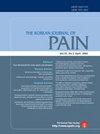Comparing analgesic efficacy of different local blocks after laparoscopic cholecystectomy: author's reply.
IF 3.4
3区 医学
Q2 CLINICAL NEUROLOGY
引用次数: 0
Abstract
We express our gratitude to the authors for their valuable comments on our recent study comparing the analgesic effects of modified thoracoabdominal nerve block through the perichondral approach (M-TAPA) and subcostal transversus abdominis plane block (TAPB) [1]. They have raised several questions concerning the study design and results. First, they addressed concerns regarding our analgesic protocol, which did not involve the routine use of nonopioid analgesics such as acetaminophen and nonsteroidal anti-inflammatory drugs (NSAIDs) after surgery. As the authors rightfully mentioned, non-opioid analgesics like acetaminophen and NSAIDs are widely used for postoperative pain management. We administered these non-opioid analgesics intraoperatively, and, considering the short surgery duration, we believe that their effects sufficiently covered postoperative pain during the fasting period (approximately 6 hours). Additionally, for laparoscopic cholecystectomy, we followed our institution's standard analgesic protocol by administering 40 mg of intravenous nefopam during the first 8 hours postoperatively. Notably, we recently reported on the opioid-sparing and analgesic effects of intravenous nefopam during thoracic surgery [2]. Moreover, 6 hours post-surgery, when patients' pain had significantly decreased and they resumed oral intake, we administered an oral tramadol/ acetaminophen combination tablet as a rescue analgesic. Second, the authors expressed concerns that our study participants may have received insufficient postoperative pain control based on the pain intensity results. Although we administered non-opioid analgesics and performed nerve blockade in both groups, we observed high pain scores immediately after surgery. It is plausible that the participants' responses to the pain assessment might have influenced these results. According to a recent prospective study on the cutoff pain scores for mild, moderate, and severe pain in adult Korean patients, the cutoff score between mild and moderate pain was 5.5 on the numeric rating scale [3]. Our previous prospective study conducted in a post-anesthesia care unit yielded similar results [4]. Since we did not provide specific guidance beyond the numeric rating scale (with 0 indicating no pain and 10 indicating the worst pain imaginable), the participants tended to respond with scores closer to the midpoint of 5 when their consciousness was not entirely clear immediately after surgery. Third, the authors highlighted the high occurrence rate of postoperative nausea and vomiting (PONV) among比较腹腔镜胆囊切除术后不同局部阻滞的镇痛效果:作者回复。
本文章由计算机程序翻译,如有差异,请以英文原文为准。
求助全文
约1分钟内获得全文
求助全文
来源期刊

Korean Journal of Pain
Medicine-Anesthesiology and Pain Medicine
CiteScore
5.40
自引率
7.10%
发文量
57
审稿时长
16 weeks
期刊介绍:
Korean Journal of Pain (Korean J Pain, KJP) is the official journal of the Korean Pain Society, founded in 1986. It has been published since 1988. It publishes peer reviewed original articles related to all aspects of pain, including clinical and basic research, patient care, education, and health policy. It has been published quarterly in English since 2009 (on the first day of January, April, July, and October). In addition, it has also become the official journal of the International Spinal Pain Society since 2016. The mission of the Journal is to improve the care of patients in pain by providing a forum for clinical researchers, basic scientists, clinicians, and other health professionals. The circulation number per issue is 50.
 求助内容:
求助内容: 应助结果提醒方式:
应助结果提醒方式:


